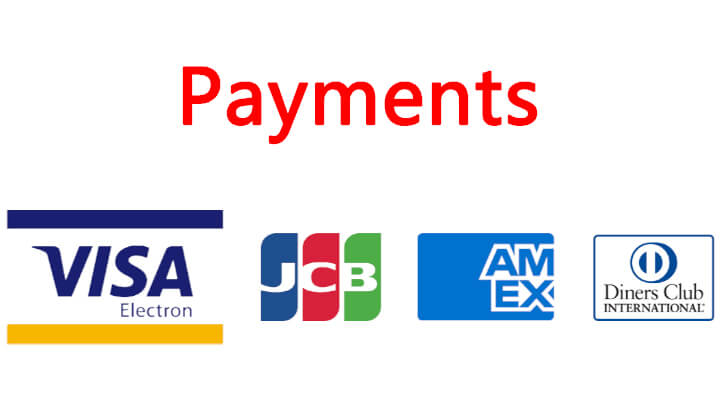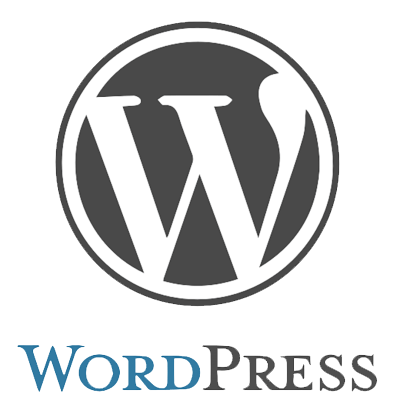Website Creation Guide: Requirements and Costs


Doing cross-border e-commerce or achieving brand globalization to connect products with the world first requires a sales channel. This sales channel refers to the cross-border independent website. By creating an independent website, products can be sold to one or multiple countries/regions. In other words, when planning the entire blueprint of cross-border e-commerce, building a dedicated independent website for product sales is the very first step. Creating an independent site that has complete e-commerce functions and supports user browsing behavior and seamless checkout is a crucial foundation for a successful cross-border e-commerce business. However, for traditional e-commerce businesses, creating a cross-border independent site that aligns with business goals, marketing strategies, and product planning across multiple dimensions is not an easy task. It requires meticulous planning to ensure that the final site functions and performs in line with the intended objectives. When planning, it is especially important to fully understand how to create an independent site, what preparations are needed, and what costs are involved, in order to make the right strategic decisions. Below, we will explain step by step the key preparations that need to be made before building an independent website.
The article “What Preparation is Needed to Build a Cross-Border E-Commerce Website and How Much Does It Cost?” will explain all aspects of building an independent website for cross-border e-commerce. By reading this article, readers without any prior website-building experience will understand the materials and data needed to create an independent website and the specific costs associated with it. The article will also cover:
- The different forms of VPS servers for different website building systems.
- The payment gateway requirements for B2C and B2B websites.
- Which materials are optional and which are essential for website creation.
- A detailed breakdown of the costs for website creation.
The article “What Preparation is Needed to Build a Website, and How Much Does It Cost?” will be divided into the following five sections, aiming to explain everything comprehensively yet simply, helping readers build their own cross-border e-commerce website step by step. If readers want to skip certain sections for selective reading, they can click the links in the article's table of contents to quickly access relevant sections:
- Purchasing a VPS server for website hosting.
- Registering a payment platform for the website.
- Preparing materials for website creation.
- Preparing business information for the website.
- A breakdown of website creation costs.
Ⅰ、 Purchasing a VPS server for website hosting.

The essence of an website lies in the combination of program files. A site's functionality operates and displays successfully through the code written within these program files. Every button and feature that appears in the visual interface of an independent site or its admin panel is fundamentally powered by this underlying code. When users interact with these functions, the server runs the code and returns the computed results. Therefore, regardless of the site-building method—be it SaaS, CMS, or static file-based—an website's program files require a VPS server to serve as the environment for file storage and execution. The difference lies in who provides the VPS server, which is determined by the chosen website building method. For SaaS-based sites, the program file hosting server is provided by the SaaS provider. For example, Shopify and Wix are SaaS website building systems developed specifically for cross-border e-commerce. In these cases, the servers are provided by Shopify and Wix, and the businesses/users creating the independent sites do not need to purchase a VPS server themselves. This is mandatory—even if you wish to buy your own server, the site cannot be transferred. In contrast, CMS platforms like WordPress or static site building methods require the site owner to purchase a VPS server separately for hosting their independent site files. Strictly speaking, only when you have control over your own server can it truly be called an “Website.” There is a wide range of information involved in selecting the right VPS server for your independent site. Many key knowledge points must be understood. Before making a final decision on purchasing a VPS server, readers are advised to read another article from Logic Digital Technology titled “How to Choose a VPS Server for an Website.” You should only make a final purchase decision after fully understanding the performance metrics and key considerations involved in buying VPS services. If you choose one of the WordPress website building plans from Logic Digital Technology, we will provide a list of recommended VPS providers and specific configurations. Clients in need of independent site building can simply follow our suggestions for purchasing.
Ⅱ、Registering a payment platform for the website.

Since it's a website, it naturally requires essential functions for product sales, shopping, and checkout. These features are also the foundational functionalities of a cross-border e-commerce website. The principle behind enabling the checkout function on a website is that it must integrate user accounts or API interfaces of payment platforms into the site's code (or via specialized plugins). Therefore, before or during the website creation process, it’s necessary to register user accounts with the following payment systems so they can be integrated into the website. This enables users to directly checkout on the site when purchasing products. There is one prerequisite: integrating PayPal for payment collection on an independent website is essential—there’s no debate about this. However, whether to also integrate an international credit card payment gateway for allowing users to pay with credit cards depends on the specific business model of the website. For B2C (consumer-facing) websites, the more diverse and flexible the payment options, the better the conversion rates. Therefore, the usual payment setup is a combination model, i.e., PayPal + Credit Card + E-wallets (various “Pay” methods). If the business model is B2B, a wide variety of payment options is unnecessary, and having too many does not positively impact conversions. These factors determine that for B2B model websites, integrating only one PayPal account as the payment method is sufficient.
1. Business PayPal account
PayPal is a digital wallet-type payment system, and in terms of functionality, it is very similar to Alipay in China. PayPal has a wide global adoption rate and is a commonly used payment method for personal users in Europe and the Americas when shopping online or transferring funds. Receiving payments via PayPal is one of the essential methods for companies engaged in foreign trade or operating cross-border e-commerce websites. PayPal has clear account type requirements for website integration—only PayPal business accounts are allowed for receiving payments on websites. Personal accounts are not supported for e-commerce transactions. The process of registering a PayPal business account is more complex than that of a personal account and requires complete business documentation. Readers can refer to Logic Digital Technology’s earlier article titled “How to Register a Business PayPal Account / How to Set Up a Business PayPal Account.” This article provides step-by-step guidance on applying for a business PayPal account.
2. International credit card payment channel
For C-end (consumer-facing) websites, enabling users to pay for products using credit cards at the front-end during the checkout process is a necessary function. For B-end (business-facing) websites, however, it is generally not necessary to consider using international credit card payment methods. There are many domestic and international credit card acquirers, and the services they provide and their fees vary to some extent, so careful evaluation and selection are required. If readers still have a vague understanding of international credit card payment functions and providers, or have no idea how to apply for and choose these providers, it is recommended to read the article previously published by Logic Digital Technology titled “International Credit Card Payment Channels for Websites.” This article aims to help readers gain a comprehensive understanding, make comparisons, and select the right international credit card acquiring service providers.
Ⅲ、Preparing materials for website creation.

There are generally four types of materials needed for website creation: image materials, video materials, text content, and colors. These materials, when combined and used on a website, will be presented as visual elements on the page. Apart from the conventional layout design, the quality of the materials used on the website is also an important factor in determining the overall visual quality of the website. High-definition images or video materials, when integrated with the overall color scheme of the website, are crucial to ensuring a strong visual impact. Since material creation involves personal aesthetic preferences and product planning, it is typically the responsibility of the cross-border e-commerce company to prepare these materials before providing them to the website development service provider. This is a task that the development service provider cannot handle. For readers building a website for the first time, there is some advice worth sharing regarding website layout and material creation. It is useful to look at well-designed competitor websites for inspiration and plan your own website’s layout and materials based on these references. If your company has graphic designers, you can have them handle the website's color scheme. If not, it’s also acceptable to use colors from reference websites as inspiration. Here’s a list of materials needed for website creation:
- Image materials: Company/brand logo, banner images, super menu icons/images, product images, inner page images, etc.
- Video material: Video material is not a must for building an independent website. It depends on the visual planning of the cross-border e-commerce company for the independent website.
- Text materials: Website title/subtitle, FAQ text content, product title, product description, homepage and inner page copywriting, etc.
- Color: Hexadecimal RGB color values for background color, button color, hover color, activation color, font color, icon color, etc.
Ⅳ、Preparing business information for the website.

Creating a website that is equipped with marketing features upon launch requires various related materials from the cross-border e-commerce enterprise, including a domain name necessary for browser access, product information, the company’s contact details, and various API interfaces required for marketing functions. Among these, product information and the domain name are mandatory; otherwise, the website cannot be built. The cross-border e-commerce enterprise only needs to register the domain and provide access to the domain registrar’s backend to the web development company. The rest of the DNS configuration can be handled by the web development company. If you want to further enhance the website’s integration with social media accounts, you also need to provide the URLs of your social media accounts to link them with the website, thereby establishing mutual connections between the website and social platforms to enable SEO social proof. The more complete these materials are, the stronger the marketing capability of the website will be at launch. The detailed list of materials required to build a website is as follows:
- Domain Name: The domain name used for the created website and the login credentials for the domain registrar’s management backend. With this information, the web development company can complete the domain’s DNS resolution (i.e., the mapping between the domain and the website server). Once the website is delivered, it can be accessed normally using the registered domain name.
- Website Language: The language used on the website is generally the language of the country/region where the website is operated. However, configuring multiple languages on a single website is also a common practice. This means that as long as there is a cooperating logistics service provider, products can be sold to multiple countries/regions through the multilingual configuration of the website. For this part, cross-border e-commerce businesses do not need to perform any technical operations. They only need to plan which languages are required for displaying the content of the website and inform the web development company. The multilingual configuration of the website is completed by the web development company through technical implementation.
- Account Credentials and API/SDK of the Payment Platform: After registering an account for the payment platform used for the website, you will be able to obtain the account credentials and API/SDK of the payment platform. This information will be used when integrating the payment platform into the website.
- Navigation Menu: The hierarchical structure and names of the website's primary, secondary, and tertiary navigation menus (such as product category hierarchy and content section hierarchy). The navigation menu represents the structure of the website, and a well-organized website structure plays a crucial role in SEO.
- Company Contact Information: Company address, company email, email forwarding address, phone number, WhatsApp, etc. The website development company will load this information onto the website. The completeness of this information can enhance the trustworthiness of the website in the minds of users.
- Product Information: Product name (the language used for the product name depends on the language of the country/region where the website operates), brand name, product description, SKU, primary and secondary product categories, and product keywords. This product information will be used when listing the product on the website.
- Social/Blog/Marketing Media Account URL: Account information for platforms such as Youtube, Facebook, Instagram, Pinterest, Linkedin, X, and Blogger, used to associate with the website to form the website's social proof.
- Third-Party Technology Provider's Account Password and API Keys: API interface information for applications such as DEEL or MailChimp, used to enable automatic translation and email marketing automation. The process of applying for these interfaces involves more technical operations. If the cross-border e-commerce enterprise cannot handle it, simply submit the relevant information to the website development company. The application for the API interface can be completed by the website development company.
Ⅴ、A breakdown of website creation costs.

This section of costs only refers to the creation cost of a cross-border e-commerce website. These costs are relatively static and represent the basic investment needed to complete a standard cross-border e-commerce website's required functions and applications. These costs do not include marketing expenses for operating the website, as marketing expenses are often dynamic and depend on the breadth of the marketing strategy. The marketing costs for the website can vary greatly, depending on the number of marketing channels, as well as the scope and depth of operations. The marketing budget is set accordingly. The various costs for building a cross-border e-commerce website can be roughly divided into the following five items, with the details for each cost item outlined below:
- Domain Registration Fee: This is the cost for registering a domain with a domain registrar, which is the fee for using the domain. It is important to note that registering a domain and purchasing a domain are two different things. Registering a domain refers to obtaining the rights to use an unregistered domain from a domain registrar. This registration process is for domains that are not in use, so the fee for registration typically ranges from a few dozen to a few hundred yuan per year, depending on the popularity of the domain. Purchasing a domain refers to acquiring the rights to a domain that has already been registered or is in use. The cost of purchasing such a domain is often tens or even hundreds of times more expensive than the cost of registering a domain, as domains are not only intangible assets but also have no fixed price, especially those used for investment purposes.
- Purchase VPS Server: The cost of a VPS server depends on the scale of the website and the hardware configuration package chosen. Each VPS server package will specify the performance parameters of the hardware configuration, and you can purchase according to your needs. In the early stages of running a website, if there is no large-scale team involved in the operation, it is recommended to select the basic package corresponding to the website setup mode for hosting the website. Later, as the website grows, the hardware configuration of the server can be expanded or the server can be migrated. Generally, the annual cost of basic to mid-range VPS server packages ranges from 1,000 to 3,000 yuan per year.
- Website Development Costs: The website development costs need to be calculated in two ways. One is for cross-border e-commerce enterprises that have technical personnel. For these companies, the website development cost can be calculated by estimating the required manpower to create the website internally. The other way is to outsource the work to a website development service company like Logic Digital Technology to complete the development. However, before proceeding, it is important to determine the type of website development model to use. The website development models can generally be divided into two types: template-based development and custom development. The cost difference between these two models is significant. Taking Logic Digital Technology's specific service fees as an example, if it is template-based development, there will be corresponding template development plans with clearly listed development fees. If it is custom development, a unified cost price cannot be given, and the required features must be selected on the Website Packages page. The website development project details and quotation are then determined based on the number of pages to be developed and the front-end and back-end functionalities required by the client. Additionally, it is worth reminding readers that the website's flat design draft (in Adobe Illustrator Ai format) provided by the client or Logic Digital Technology is a significant factor that affects the cost of custom development projects.
- Global Credit Card Payment Gateway Integration Fees: The global credit card payment gateway is generally only applicable to websites targeting the C-end. The cost depends directly on the qualifications of the cross-border e-commerce enterprise. If the company qualifications of the cross-border e-commerce website meet the requirements for applying for foreign global credit card payment gateway services, there is no installation (integration) fee or annual fee for using the credit card payment channel, as foreign global credit card payment service providers charge fees based on each transaction and withdrawal operation. In contrast, domestic global credit card payment service providers not only charge the standard rate but also impose integration fees and annual usage fees. Each service provider may have slight differences in fees, but they are generally similar, with fees ranging from 5000 to 10000 RMB. The installation fee is a one-time charge, while if an annual fee is required by the provider, it will need to be renewed every year. For B2B websites, the global credit card payment gateway is generally not needed, as these websites only require the integration of a PayPal business account, which does not incur any fees to apply for.
- Other Marketing or Operational Function Extension Plugin Fees: In addition to the aforementioned fees, creating and operating a website may also involve the costs of plugins required to expand marketing and operational functions. These plugins can help website operators achieve the necessary functions for the site, with monthly fees ranging from tens to hundreds of RMB.
Conclusion: The above content is the full explanation of "How to Create a Website? What is Needed to Build a Website, and What Are the Costs?" By reading this, readers should have a clearer understanding of how to create their own cross-border e-commerce website and how much investment is required. The information provided can help clarify most of the questions about creating a website, and when ready, you can start preparing the necessary materials, information, and funds to kick off your website project.
Finally, if your time is precious, and the time cost for learning and technical practice is high, and you are not interested in deeply engaging in technical learning and hands-on practice, but you simply want to understand the process and preparations for building a website, without planning to handle the technical work yourself, it's best to leave the professional tasks to the experts. If you need professional WordPress website building and technical development services, feel free to contact the Logic Digital Technology team, and entrust us with the development of your cross-border e-commerce website.
Logic Digital Technology (SZLOGIC) All rights reserved. This article is welcome to be shared by individuals to help newcomers entering the cross-border e-commerce independent website track, but reproduction for commercial purposes is prohibited.


























